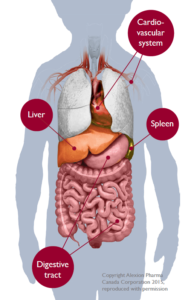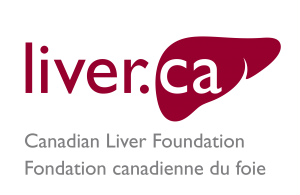Lysosomal Acid Lipase Deficiency (LALD)
Lysosomal Acid Lipase Deficiency (LALD)
Lysosomal acid lipase deficiency (LALD) is a chronic, progressive, inherited disease. Children and adults with LALD do not have a fully functioning enzyme that is needed for the breakdown of certain lipids (fats). As a result of this deficiency, these lipids accumulate in organs (including the liver and spleen) and cells throughout the body causing them to not work properly. This can lead to fatty liver disease, cirrhosis (scarring of the liver) and liver failure.
Cause
LALD is caused by a deficiency of an enzyme called lysosomal acid lipase (LAL). The LAL enzyme plays a major role in the control of lipid particles known as low density lipoproteins (LDL), a type of cholesterol referred to as “bad cholesterol” which can be linked to cardiovascular disease. Without this enzyme, harmful amounts of various lipid particles build up in a part of the cell known as the lysosome. This fat accumulation, can lead to significant health consequences including damage to the liver and other organs.
LALD in Infants
Very low levels of the LAL enzyme lead to early onset LALD, also known as Wolman disease (WD). It is estimated that LALD occurs in about 8 live births per year. However, the rate may be higher if the parents are of Persian-Jewish ancestry. LALD presents in infants as a rapidly progressive disease with life-threatening complications occurring most frequently within the first six months of life. Infants with this disease develop liver failure and cannot grow properly because they have difficulty absorbing nutrients from food. Affected infants generally do not survive past one year of age.
LALD in Children and Adults
Late onset LALD is also known as cholesteryl ester storage disease (CESD) and can affect children and adults. It is estimated that the prevalence of CESD is 1 in 40,000 individuals. The deficiency of the LAL enzyme leads to a build-up of fat in the liver, spleen and other parts of the body. In children and adults, the disease may not be easily recognized because individuals may feel well and have no symptoms. Many lipids accumulate in the liver, and as a result, the liver becomes dysfunctional and may become enlarged. Ultimately, scarring and liver failure may occur. In addition, high levels of lipids in the blood can lead to cardiovascular complications, such as coronary artery disease (CAD) and stroke.
 Diagnosis
Diagnosis
Because some of the signs and symptoms associated with LALD are similar to those of other more common disorders, it may take months or even years for people with LALD to get an accurate diagnosis. Also, since the initial signs and symptoms may seem rather mild, patients and healthcare providers may not suspect a progressive disease for a long time. An accurate and definitive diagnosis of LALD can be made with a blood test that measures the activity of the LAL enzyme. LALD can also be diagnosed through genetic testing. You need to consult your healthcare professional regarding testing for LALD.
Symptoms
Infants, children and adults who suffer from LALD experience a range of serious health problems. The lack of the LAL enzyme can lead to a build-up of fatty material in a number of body organs including the liver, spleen, gut, in the wall of blood vessels and other organs.
Many signs of LALD may not be visible and can only be determined through blood tests and examination by a healthcare provider. However, some common symptoms and signs of LALD in infants may include:
• Failure to grow
• Difficulty absorbing nutrients from food (malabsorption), presence of fat in feces
• Persistent diarrhea and vomiting
• Swollen belly
• Jaundice (yellowing of the skin and eyes).
The signs and symptoms of LALD in children and adults may not be present at all. As the liver damage progresses, symptoms may include:
• Enlarged abdomen from fluid accumulation (ascites)
• Easy bruising or bleeding
• Jaundice (yellowing of the skin and eyes).
Treatment
Sebelipase alfa is a medication used for the treatment of lysosomal acid lipase (LAL) deficiency. Sebelipase alfa is a recombinant form of the human enzyme lysosomal acid lipase. It acts as an enzyme replacement therapy, meaning it supplements or replaces the deficient or non-functional LAL enzyme in those diagnosed. By doing so, it helps break down the accumulated fats, reducing liver damage and other related complications.
Sebelipase alfa is indicated for patients of all ages, including infants, children, and adults, who are diagnosed with LAL deficiency. The treatment is administered as an intravenous infusion and should be supervised by healthcare professionals experienced in managing metabolic disorders or chronic liver diseases.
Support
National Help Line:
This support resource gives you and your loved one somewhere to turn for answers after diagnosis, helps you understand your disease, and provides you with the resources you need. You can call 1 (800) 563-5483 Monday to Friday from 9 AM to 5 PM EST.
The Peer Support Network:
This is a national network of people living with liver disease that have offered to share their experiences with others. It was developed by the Canadian Liver Foundation as a means to link Canadians like you who have a family member who has liver disease, who care for someone who suffers from liver disease, or who have been diagnosed with a liver disease, to talk about your concerns with a peer in a similar situation.
If you would like to be connected with a peer supporter in your area, or would like to join the peer support network, please call the National Help Line at 1 (800) 563-5483 Monday to Friday from 9 AM to 5 PM EST or email us.
Help us help you!
If you are not satisfied with the information you just read or any information on our website, please take a moment to send us your comments and suggestions on the type of content you would like to find on liver.ca. Please include the page you are commenting about in the subject line of your email.



